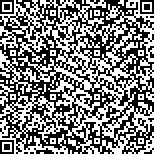| 引用本文: | 李泽兰,曹一家,彭寒梅,孟凡东.基于流形理论与L1+L2约束的智能电网故障定位[J].电力系统保护与控制,2020,48(18):48-58.[点击复制] |
| LI Zelan,CAO Yijia,PENG Hanmei,MENG F,ong.Smart grid fault location based on manifold theory and L1+L2 constraints[J].Power System Protection and Control,2020,48(18):48-58[点击复制] |
|
| |
|
|
| 本文已被:浏览 4169次 下载 1512次 |

码上扫一扫! |
| 基于流形理论与L1+L2约束的智能电网故障定位 |
| 李泽兰,曹一家,彭寒梅,孟凡东 |
|
|
| (1.湖南大学电气与信息工程学院,湖南 长沙 410082;2.湖南电气职业技术学院,湖南 湘潭 411100) |
|
| 摘要: |
| 现有的故障定位算法只能适应于小数据样本并且对于数据的依赖程度高。若数据中存在异常数据会带来较大的定位误差,且故障区域与故障位置需要分别进行求解。采用流行学习方法对智能电网中全局信息进行数据提取,充分利用了高维数据中包含的故障信息,并构造了故障区域与故障位置相统一的模型,通过L1+L2约束摆脱了对数据的依赖。算法中的参数统一采用Adagard方法进行学习,自动调节学习效率,提高参数学习的准确度和速度。最后,在PSCAD中搭建IEEE39节点模型,并在不同的场景下对算法的鲁棒性和定位精度进行了验证。 |
| 关键词: 流行学习 L1+L2约束 Adagard方法 PSCAD 鲁棒性 |
| DOI:DOI: 10.19783/j.cnki.pspc.191254 |
| 投稿时间:2019-10-13修订日期:2020-05-02 |
| 基金项目:国家自然科学基金项目资助(51520105011) |
|
| Smart grid fault location based on manifold theory and L1+L2 constraints |
| LI Zelan,CAO Yijia,PENG Hanmei,MENG Fandong |
| (1. College of Electrical and Information Engineering, Hunan University, Changsha 410082, China;
2. Hunan Electrical College of Technology, Xiangtan 411100, China) |
| Abstract: |
| Existing fault location algorithms only adapt to small samples and heavily depend on data. If abnormal data exists, it will cause larger positioning errors, and the fault area and fault location need to be solved separately. In this paper, the manifold learning method is used to extract global information in a smart grid. This makes full use of the fault information contained in the high-dimensional data. A unified model of fault area and fault location is constructed, which can get rid of the dependence on data through L1 + L2 constraints. The parameters in the algorithm are uniformly learned by the Adagard method, which can automatically adjust the learning efficiency and improve the accuracy and speed of parameter learning. The IEEE39 bus system built in PSCAD proves the algorithm's robustness and high precision in different scenarios.
This work is supported by National Natural Science Foundation of China (No. 51520105011). |
| Key words: manifold learning L1 + L2 constraint Adagard methods PSCAD robust |
|
|